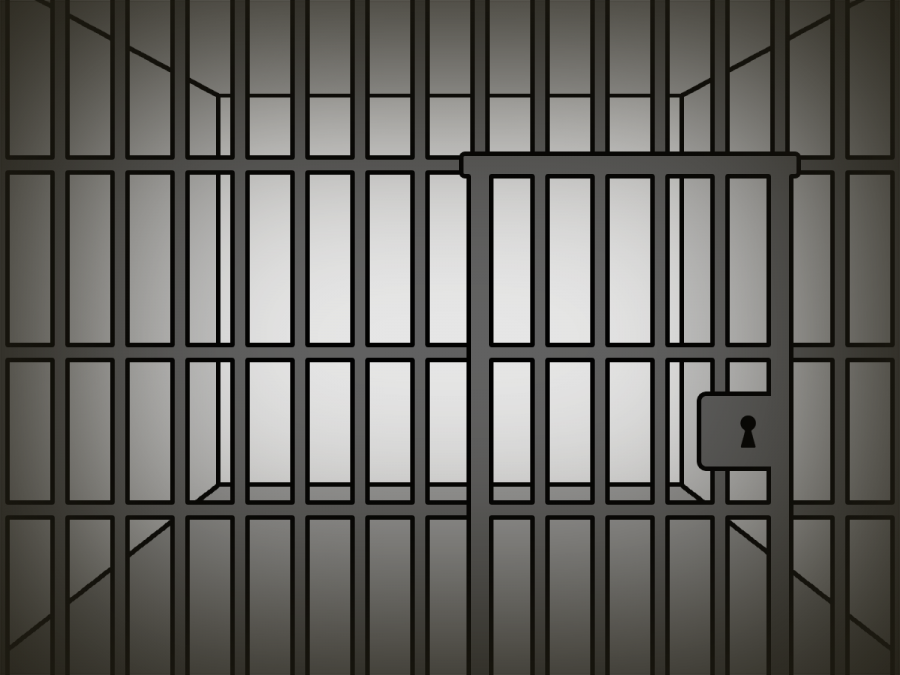New prison reforms pose major safety risk
In the midst of the government’s prison reform endeavors, they must create a fair and effective algorithm which preserves the life of innocent citizens
May 29, 2020
“7 high-risk sex offenders released from Orange County jails; DA’s office issues community warning,” an ABC News article read.
“Arrested 4 times in 3 weeks: L.A. police blame zero bail for rise in repeat offenders,” the Los Angeles Times reported.
“Man let out of jail on zero-bail rule leads Fresno Police on chase in stolen vehicle,” Fox29 headlined.
All of this, because Los Angeles County implemented a zero-bail requirement for most misdemeanors and low-level felonies on Mar. 27 in response to the Coronavirus outbreak. The term “low-level felony” sounds dismissive to residents living at a Jewish assisted-living home who experienced a bomb threat. Nor is a misdemeanor assault crime an offense to be taken lightly when women who have been severely violated must watch powerlessly and in fear of retaliation as their abuser walks free. The existence of these headlines itself proves that the mechanism by which prisoners are being released to decrease prison overcrowding is entirely ineffective.
Crime levels in Los Angeles were low when the COVID-19 quarantine began, until L.A. implemented its zero-bail policy. Hundreds of career criminals are exploiting the new laid-back reform by getting arrested repeatedly with few repercussions. In the first 30 days since the implementation of the plan, the Los Angeles Police Department has arrested 213 individuals multiple times, with 23 being arrested three or more times, and the numbers are rising steadily.
A memo released a few weeks ago by Attorney General William Barr ordered the Federal Bureau of Prisons (BOP) to identify “at-risk inmates who are non-violent and pose minimal likelihood of recidivism and who might be safer serving their sentences in home confinement.” There are several problems with this, including massive flaws in determining which inmates are optimal candidates for release. High ambiguity decreases the ability for officials to accurately foresee the consequences of releasing an inmate. The actions of newly freed inmates who are about to re-enter society where there are few repercussions for their crimes are nearly impossible to predict. This leaves the decision entirely up to blind trust in the skeptical judgement of the incarcerated, some of whom are charged with repeated crimes.
Upon closer inspection, the Attorney General’s plan may create racial disparities among inmates considered for release from prison and further entrenches racist criminal justice practices. The plan instructs the prioritization of prisoners who receive a minimum score on a “risk assessment” algorithm called PATTERN, an unprecedented computerized rating system which deems white-collar offenders safer to release in comparison to the disproportionate number of black drug addicts who had succumbed to the biased policing practices of the War on Drugs. Last year’s internal investigation conducted by the Justice Department reveals that only 7% of black men would be considered low-risk enough for release under PATTERN. The policy also prohibits non-citizens convicted of immigration-related offenses from release, deeming them more dangerous than the high-risk sex offenders who have been released.
Those who support the policies argue that prison overcrowding puts vulnerable populations of incarcerated senior citizens at risk, causing them to live in fear of doubt as prison populations increase. To clarify, this article is not meant to criticize the fact that prison overcrowding must be addressed. It absolutely must. It is permissible to release senior populations who are not putting the public at immediate risk. However, it is not permissible to release those who are capable of committing the same crimes repeatedly and distracting attention from the larger issues at hand. The racist and ambiguous mechanism which overlooks important public safety measures must be scrutinized more closely and equitably.
Overall, the newfound policy has proven to be counterproductive. The intent to decrease death rate by reducing risk of contraction among inmates has instead spiked in society-at-large due to the repercussions of releasing violent repeat-criminals. The Justice Department must weigh the lives of innocent people against those already behind bars. Prison overcrowding certainly is a formidable problem that must be dealt with, However, reducing punishment for assault and other crimes is not the sustainable solution we need. It bolsters the criminal problem, leading to inevitable arrest after crime rates reach a threshold, and creates a positive feedback loop which cycles people back to incarceration and threatens public safety.
In the words of William Barr himself, “While we have an obligation to protect BOP personnel and the people in BOP custody, we also have an obligation to protect the public.” And his PATTERN algorithm and no bail policy have failed to do just that.

























































